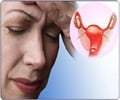Consumption of caffeine impacts Asian and white women differently.

However, white women who consumed 200 milligrams or more of caffeine a day had slightly lower estrogen levels than women who consumed less.
Black women who consumed 200 milligrams or more of caffeine a day were found to have elevated estrogen levels, but this result was not statistically significant.
Total caffeine intake was calculated from any of the following sources: coffee, black tea, green tea, and caffeinated soda.
Findings differed slightly when the source of caffeine was considered singly.
Consuming 200 milligrams or more of caffeine from coffee mirrored the findings for overall caffeine consumption, with Asians having elevated estrogen levels, whites having lower estrogen levels, and the results for blacks not statistically significant.
Advertisement
The changes in estrogen levels among the women who took part in the study did not appear to affect ovulation. Studies conducted in animals had suggested that caffeine might interfere with ovulation.
Advertisement
"Short term, these variations in estrogen levels among different groups do not appear to have any pronounced effects. We know that variations in estrogen level are associated with such disorders as endometriosis, osteoporosis, and endometrial, breast, and ovarian cancers.
"Because long term caffeine consumption has the potential to influence estrogen levels over a long period of time, it makes sense to take caffeine consumption into account when designing studies to understand these disorders," Schisterman added.
The study was published online in the American Journal of Clinical Nutrition.
Source-ANI















